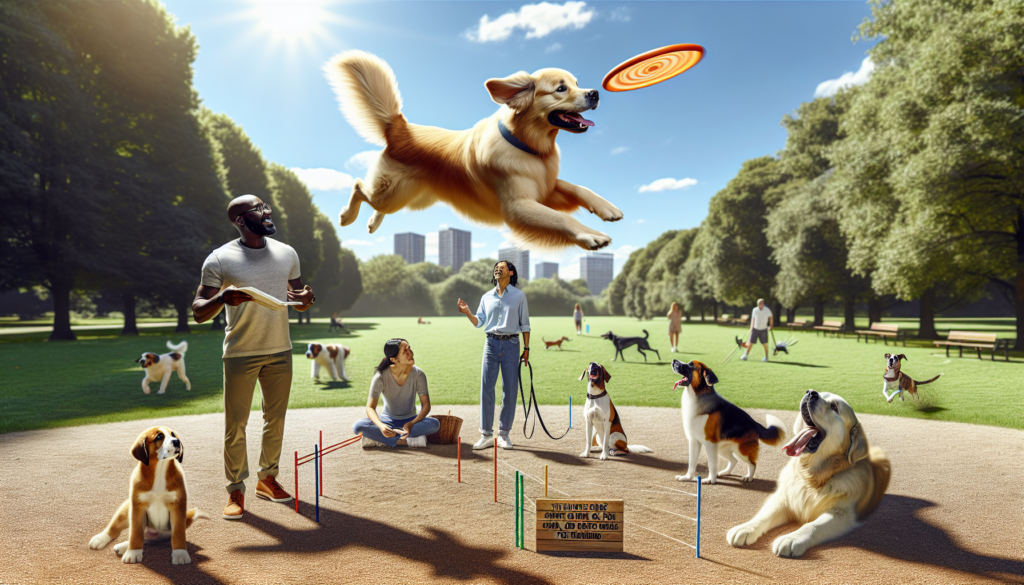Through millennia of breeding, dogs have evolved to possess three distinct types of intelligence: instinctive, adaptive, and working/obedience, making them ideal companions for humans. With the ability to understand up to 250 words, breeds like the golden retriever don’t just excel in puppy training and as therapy dogs but also showcase remarkable skills in areas such as being a hunting dog. Their intelligence isn’t merely for commands; it extends into understanding complex human cues, demonstrating that canine intelligence is more intricate and varied than often acknowledged, especially in intelligent breeds[1][4].
Canine intelligence varies among breeds, offering a rich tapestry of abilities that cater to different human needs, from golden retriever rescue operations to providing companionship. Stanley Coren’s seminal work, “The Intelligence of Dogs,” underscores that 51% of dogs’ intelligence comes from their genes, while their environment influences the rest. This insight opens up avenues for owners to engage in more directed and meaningful interactions, like dog sports, to enhance their pet’s cognitive abilities and foster a deeper bond between them[3][4].
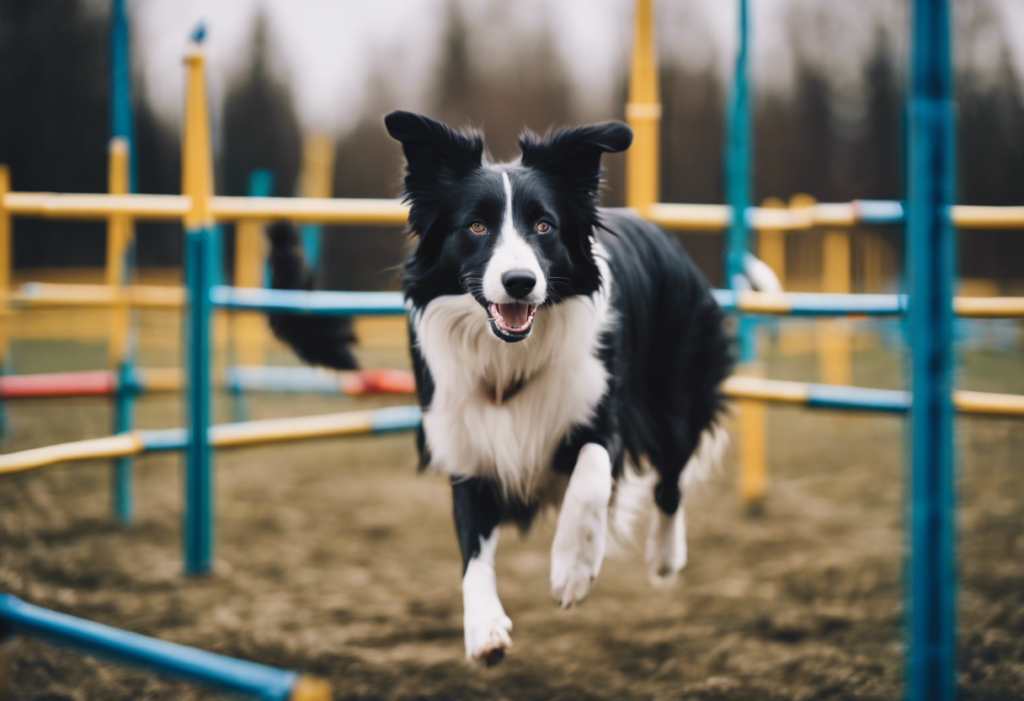
Border Collie
Border Collies, renowned for their exceptional intelligence, consistently top the charts in cognitive abilities among dog breeds. A comprehensive study by the University of Helsinki highlighted their prowess in social cognition, inhibitory control, and spatial problem-solving, outperforming many other breeds, including Labrador Retrievers [5]. Stanley Coren, who ranks Border Collies as the most intelligent dog breed, particularly noted for their working and obedience intelligence [6], supports these findings.
Physical and Behavioral Characteristics
Border Collies are medium-sized dogs, standing 18-22 inches at the shoulder and typically weighing 26-45 pounds. They possess rough or smooth coats in various colors and patterns and are known for their agility and speed. Originating from the border region between Scotland and England, these dogs were bred primarily for their intelligence and herding abilities, which require physical and mental exercise [8]. Despite their high energy levels, Border Collies are not recommended for first-time pet owners due to their need for extensive physical activity and mental engagement [8].
Health and Lifestyle Needs
Border Collies have a lifespan of 12-16 years and require regular veterinary checkups to maintain their health. They are not suitable for apartment living; a large yard or property where they can expend energy is ideal. These dogs are not hypoallergenic and shed throughout the year, which potential owners should consider. To keep their minds active, Border Collies benefit immensely from puzzle toys, obedience training, agility courses, and other interactive activities that provide mental stimulation [8][7]. Their emotional intelligence also makes them excellent candidates for roles as therapy and assistance dogs [7].
Understanding Service Animals: The Role of Emotional Support Dogs in Oregon
Emotional Support Animals (ESAs) serve an instrumental role in the lives of individuals facing mental…
The Essential Guide to Puppy Shots: What Every New Owner Must Know
Getting a new puppy is an exciting experience, but it also comes with a lot…
LIFE Dog Training: An Evolution of LIMA Dog Training?
In the dog training world, a paradigm shift has been underway, moving toward more humane…
The Ultimate Guide to Smarter Dog Games
The Ultimate Guide to Smart, Fun, and Engaging Dog Games for Training Dog training games…
Canine Separation Anxiety: Treatment Options
Separation anxiety in dogs is a common and distressing behavioral issue that affects a significant…
Choosing a Safe Flea Medicine
What You Need to Know: Selecting the Safest Flea Medicine for Dogs Selecting the safest…
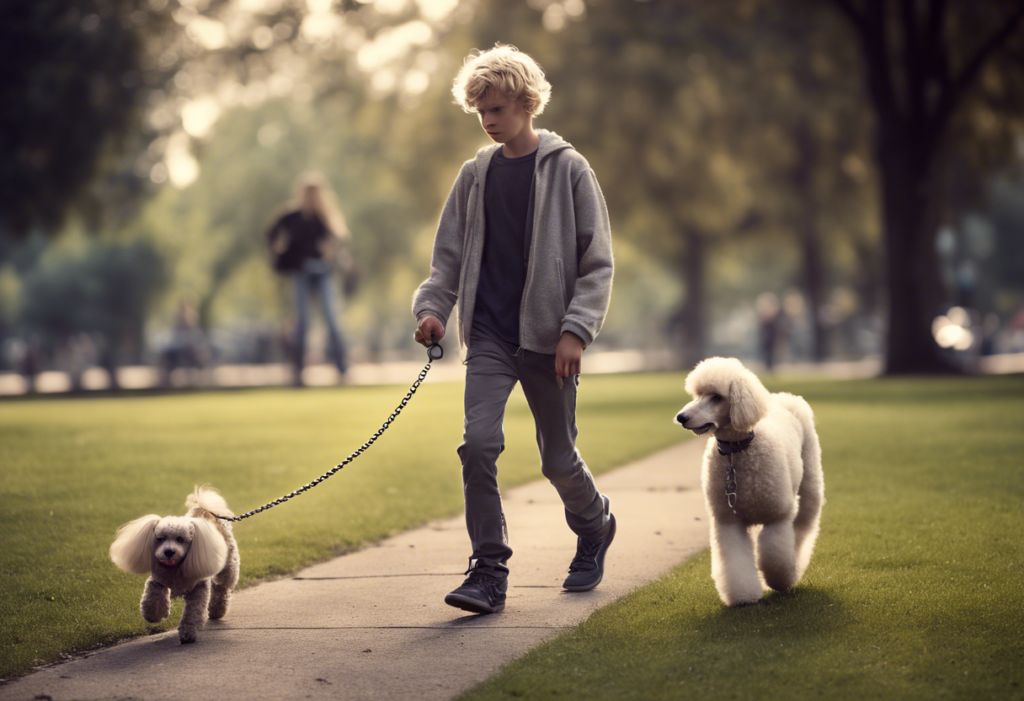
Poodle
Poodles are among the brightest stars in the canine cosmos, ranked second only to the Border Collie in terms of intelligence. According to Dr. Stanley Coren, a professor of canine psychology, Poodles excel in working and obedience intelligence, which does not account for instinctive, adaptive, and emotional intelligence [1]. This breed’s capabilities are astounding; they can learn new commands with fewer than five repetitions and obey a command the first time it is said 95% of the time [11].
Historically developed in Germany as water retrievers, Poodles’ rich heritage enhances their natural aptitude [1]. They are quick learners, highly trainable, and can learn up to 300 words, making their intelligence comparable to a 2-year-old human child [10][11][12]. Their appearance—characterized by curly hair often perceived as posh—belies a jovial temperament that delights in performing tricks and engaging in playful antics [1].
Engaging their senses and providing mental stimulation through puzzles and interactive toys is crucial to fostering and enhancing a poodle’s intellectual growth. These activities improve their problem-solving skills and maintain their mental health [11]. As family dogs, they bring joy and dynamic energy to any home, proving that their intelligence is matched by their affection and adaptability [10].
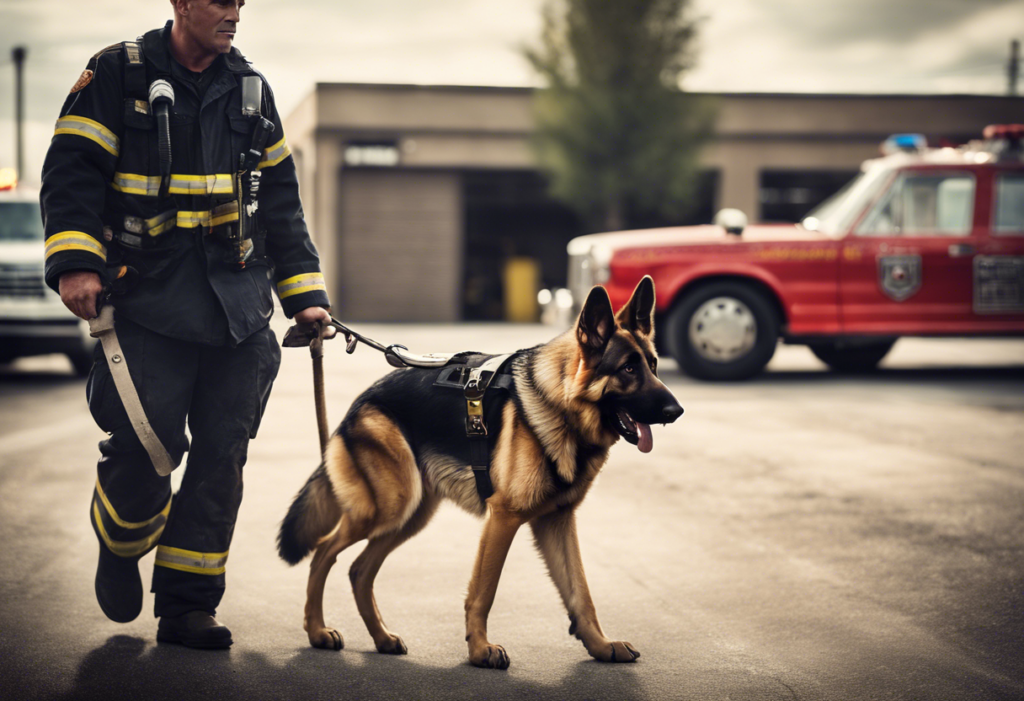
German Shepherd
Cognitive Abilities and Training
German Shepherds rank as the third most intelligent dog breed, a testament to their remarkable cognitive abilities. They have a mental capacity comparable to a 2.5-year-old human child and can learn new commands in as few as five repetitions [1]. This breed’s intelligence is deeply rooted in their history as working dogs, particularly in roles that require acute attentiveness and logical thinking, such as shepherding [1]. Their ability to recognize a wide range of verbal, audible, or non-verbal cues makes them exceptionally trainable and sharp [1][1].
Versatility in Roles
Owing to their high trainability and excellent memory retention, German Shepherds are suitable for various demanding roles. They are widely recognized for their work as service dogs in search and rescue operations and as invaluable assets in police and military settings [1]. Their disciplined nature ensures reliability, and their training is generally straightforward due to their eagerness to please and cooperate with human handlers [1].
Work Ethic and Reliability
German Shepherds are not only easy to train but are also known for their steadfast dedication to tasks. They excel in specialized disciplines like tracking, drug detection, and search and rescue work [1]. Known for their dependability, German Shepherds are disciplined workers who continue their tasks until completion, showcasing their commitment and never showing stubbornness [1]. Their quick learning ability and adaptability make them one of the most dependable working breeds across various demanding environments [1].
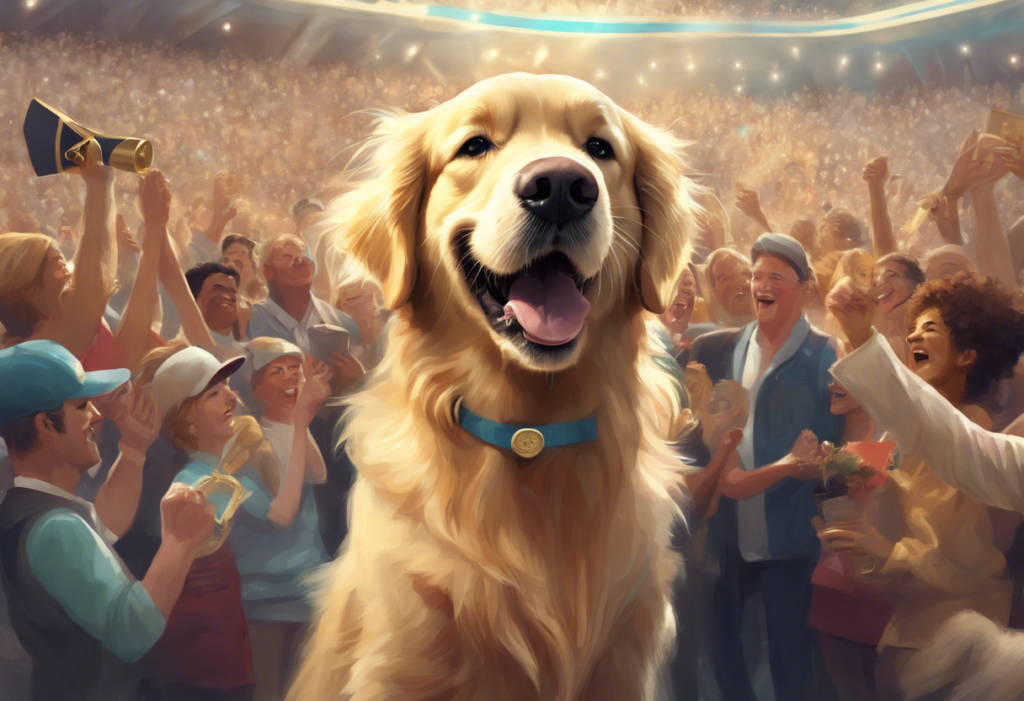
Golden Retriever
According to Stanley Coren’s influential book on canine intelligence, Golden Retrievers rank as the fourth most intelligent breed. This places them in the “Excellent Working Dogs” category, indicating their ability to understand new commands in 5 to 15 repetitions and to obey the first command 85% of the time or better [15]. Their high placement in intelligence rankings emphasizes their capability in various training and working environments, making them popular pets and effective working dogs in roles such as search and rescue and therapy assistance [15][16].
Renowned for their friendly and approachable demeanor, Golden Retrievers are particularly noted for their eagerness to please and quick learning abilities. Most can learn a new command in fewer than 15 repetitions and follow it at least 85% of the time, showcasing their high intelligence and trainability [16].[16] This breed’s desire to please its owners makes it exceptionally trainable and responds well to positive reinforcement techniques [17].
Anecdotal evidence also points to their remarkable memory and situational awareness. For instance, a Golden Retriever remembered a specific location on a trail where they had seen deer weeks earlier, demonstrating memory and an ability to associate places with specific events [17]. This kind of intelligence goes beyond simple obedience. It enters the realm of complex cognitive processing, illustrating why Golden Retrievers are valued in homes and in various professional capacities.
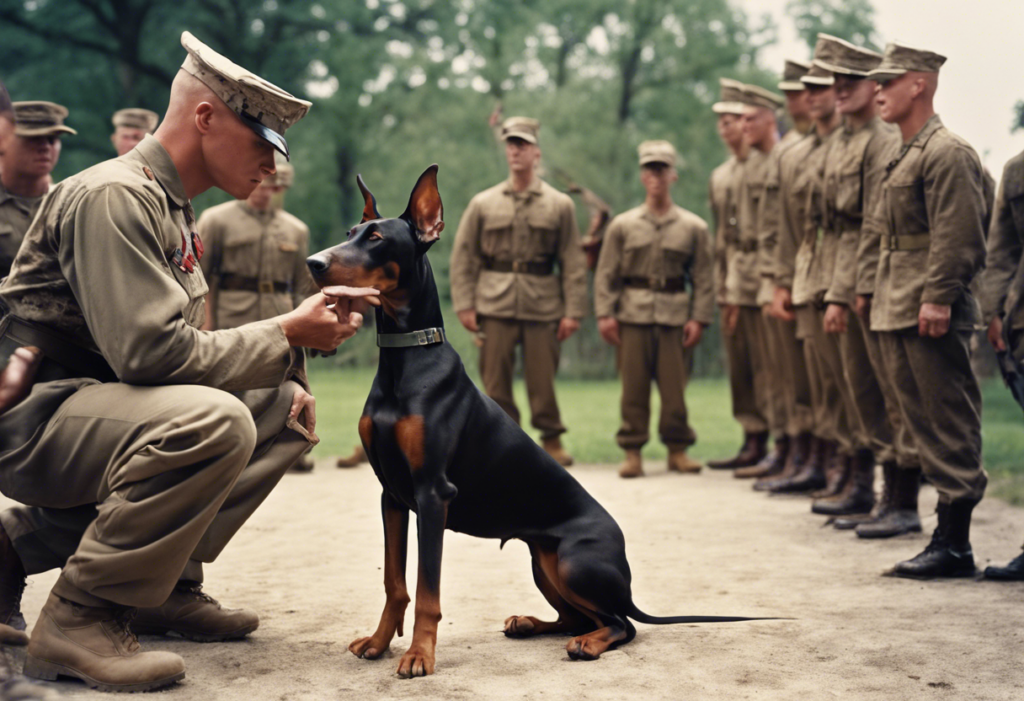
Doberman Pinscher
Origins and Historical Roles
The Doberman Pinscher, developed in Germany by Karl Friedrich Louis Dobermann in the late 19th century, was initially bred for police and military work, combining characteristics from various breeds such as Rottweilers, Greyhounds, and Sheepdogs for optimal guarding and companionship [18][22]. During World War II, these dogs played significant roles with the U.S. Marine Corps, where they led patrols and provided essential warnings of hidden dangers, showcasing their intelligence and versatility in high-pressure environments [18].
Physical Characteristics and Health
Dobermans are elegant, medium-sized dogs, with males typically standing between 26-28 inches and weighing 75-100 pounds, while females are slightly smaller. They possess a smooth, short coat, minimal to moderate shedding, and distinctive rust markings in colors like black, red, blue, or fawn [18][23]. Health-wise, they require regular exercise and monitoring for conditions such as hip dysplasia, cardiomyopathy, and von Willebrand’s disease, with recommended tests including hip and thyroid evaluations and cardiac exams [21][23].
Intelligence and Trainability
Ranked fifth in intelligence among dog breeds, Dobermans are known for their sharp problem-solving skills and exceptional trainability [19][20]. Their adaptive intelligence allows them to quickly learn from their environment and adjust their behavior, making them highly effective in search and rescue, therapy work, and competitive dog sports. Regular mental and physical stimulation is crucial to harness their high energy and intelligence, ensuring they remain engaged and well-behaved family members [20][21][22].

Shetland Sheepdog
Cognitive and Training Capabilities
Shetland Sheepdogs, commonly called Shelties, are renowned for their exceptional intelligence, consistently ranking in the top tier of working dog breeds [24]. Their ability to learn quickly and eagerness to please make them highly trainable. They excel in obedience and agility due to their strong desire to work closely with handlers [24]. These traits are complemented by their remarkable problem-solving skills, as Shelties can think on their feet and devise creative solutions to challenges [25].
Social and Emotional Intelligence
Shelties are smart, highly sociable, and adept at understanding and interacting with humans and other animals. This makes them excellent therapy dogs and companions, capable of intuitively picking up on cues and emotions [25]. Their high sociability is paired with exceptional memory skills, enabling them to remember commands and tricks for extended periods, which showcases their ability to retain and recall information effectively [25].
Herding Instinct and Mental Stimulation Needs
Originally bred for herding, Shelties have a strong instinct to herd other animals and even people, which requires careful management to prevent unwanted herding behaviors [24]. They thrive in environments that provide ample mental and physical challenges, as regular stimulation through interactive toys, puzzles, and training sessions enhances their cognitive abilities and overall well-being [26][28].

Labrador Retriever
Labrador Retrievers are celebrated for their robust instinctive and adaptive intelligence, making them one of the smartest breeds, well-suited for family life, and specialized roles such as guide dogs [29][1]. Their intelligence and strong work ethic ensure they are highly trainable and capable of performing complex tasks [29]. Its ranking highlights this breed’s cognitive abilities as the 7th smartest among the 18 breeds evaluated by experts in canine intelligence [1].
Cognitive Skills and Utility
Labrador Retrievers excel in understanding up to 250 words and symbols and demonstrating skills in counting and spatial awareness, which are crucial for tasks involving navigation and obedience [29]. Their ability to communicate effectively with humans enhances their role as service dogs, aiding individuals with disabilities [1]. This breed’s combination of instinctive intelligence, related to its breed-specific traits, and adaptive intelligence, which covers its learning and problem-solving capabilities, makes it adaptable across various settings [29].
Training and Social Adaptation
Despite a reputation for being easily distracted, Labradors excel in obedience training. They are often chosen for roles requiring high discipline and understanding, such as search and rescue operations [29]. Their desire to please and ability to quickly adapt to their environment makes them ideal for first-time dog owners and those seeking a reliable, intelligent companion [29][1]. The breed’s sociable nature makes them excellent family pets and effective in therapeutic settings, where they interact empathetically with humans [1].
Conclusion
Through the exploration of various breeds, from the Border Collie’s exceptional problem-solving abilities to the Labrador Retriever’s adaptability and strong work ethic, it is evident that canine intelligence is multi-faceted, blending instinctive, adaptive, and working/obedience intelligence. The diversity among breeds in cognitive abilities highlights the importance of tailored engagement and training strategies that cater to each breed’s unique strengths and needs. This understanding fosters a deeper bond between dogs and their owners and maximizes the potential for dogs to excel in specialized roles.
The significance of breed-specific intelligence extends beyond mere curiosity, influencing how effectively breeds can be trained for different roles, from companion animals to working dogs in various domains. As we delve into the complexities of canine cognition, the potential for further discovery invites dog enthusiasts to deepen their knowledge and interaction strategies. For those keen on further exploring the cognitive world of dogs and advancing their training methodologies, learn more about dog training and read more insightful articles. This journey into understanding and appreciating the intelligence of our canine companions enriches our shared lives, making every interaction more meaningful and rewarding.
FAQs
Q: Do intelligence levels vary among different dog breeds?
A: Yes, intelligence levels do vary among different dog breeds. A comprehensive study by the University of Helsinki involving over 1,000 dogs across 13 breeds found significant differences in social cognition, problem-solving skills, and inhibitory control among the breeds.
Q: How does a dog’s intelligence compare to human age?
A: According to psychologist Stanley Coren, dogs’ mental abilities are often compared to those of a human child aged between 2 and 2.5 years. The intelligence level can vary based on the dog’s breed.
Q: Which dog breeds are considered the most intelligent?
A: Among the top contenders for the most intelligent breeds based on assessments of relative intelligence include the Border Collie, Poodle, German Shepherd, Golden Retriever, Doberman Pinscher, Shetland Sheepdog, Labrador Retriever, and Papillon. These breeds are recognized for their exceptional cognitive abilities in various rankings, including in “The Intelligence of Dogs” by Stanley Coren.
References
[1] – https://www.rd.com/list/smartest-dog-breeds/
[2] – https://www.thewildest.com/dog-behavior/dog-intelligence
[3] – https://www.yummypets.com/mag/2014/06/24/39237/stanley-coren-dogs-intelligence-ranking
[4] – https://www.akc.org/expert-advice/lifestyle/dog-cognition-dogs-are-smarter-than-you-think/
[5] – https://bigthink.com/life/dog-intelligence-test/
[6] – https://www.quora.com/How-does-the-intelligence-of-collies-compare-to-other-breeds-of-dogs-such-as-German-shepherds-or-border-collies
[7] – https://blog.tryfi.com/are-border-collies-smart/
[8] – https://www.aspcapetinsurance.com/resources/border-collie/
[9] – https://www.nbcnews.com/health/health-news/how-smart-your-dog-border-collies-star-new-dog-research-n1280865
[10] – https://www.quora.com/Are-poodles-the-smartest-breed
[11] – https://www.allpoodleinfo.com/poodle-intelligence
[12] – https://www.smh.com.au/world/poodles-smarter-than-toddlers-20090810-eejk.html
[13] – https://www.poodleforum.com/threads/are-spoos-really-that-intelligent-and-trainable.22088/
[14] – https://www.quora.com/Do-mixed-breeds-like-Labradors-tend-to-be-less-intelligent-than-purebreds-like-golden-retrievers-Why-or-why-not
[15] – https://en.wikipedia.org/wiki/The_Intelligence_of_Dogs
[16] – https://www.goodhousekeeping.com/life/pets/g4748/top-smartest-dog-breeds/
[17] – https://www.quora.com/How-much-intelligence-does-a-golden-retriever-have
[18] – https://www.akc.org/expert-advice/lifestyle/facts-about-the-doberman-pinscher/
[19] – https://www.petmd.com/dog/general-health/smartest-dog-breeds
[20] – https://www.quora.com/How-intelligent-are-Dobermans-compared-to-other-dogs-What-makes-them-special-in-that-regard
[21] – https://www.dogster.com/dog-breeds/are-dobermans-smarter-than-average-dogs
[22] – https://www.youtube.com/watch?v=xvnlOk1_6E8
[23] – https://www.akc.org/dog-breeds/doberman-pinscher/
[24] – https://www.quora.com/How-smart-is-a-Shetland-sheepdog
[25] – https://www.youtube.com/watch?v=OAGvRmaJzTs
[26] – https://embarkvet.com/resources/dog-breeds/shetland-sheepdog/
[27] – https://www.krtv.com/news/national/dog-breeds-put-through-intelligence-tests-how-did-they-fare
[28] – https://www.pawprintgenetics.com/blog/2013/10/21/breed-week-shetland-sheepdog/
[29] – https://post.bark.co/breeds/are-labrador-retrievers-smart/






